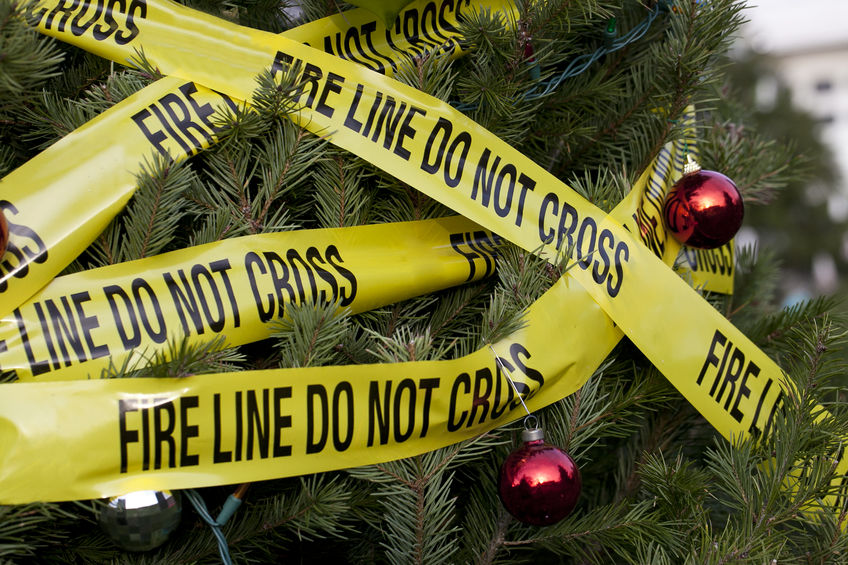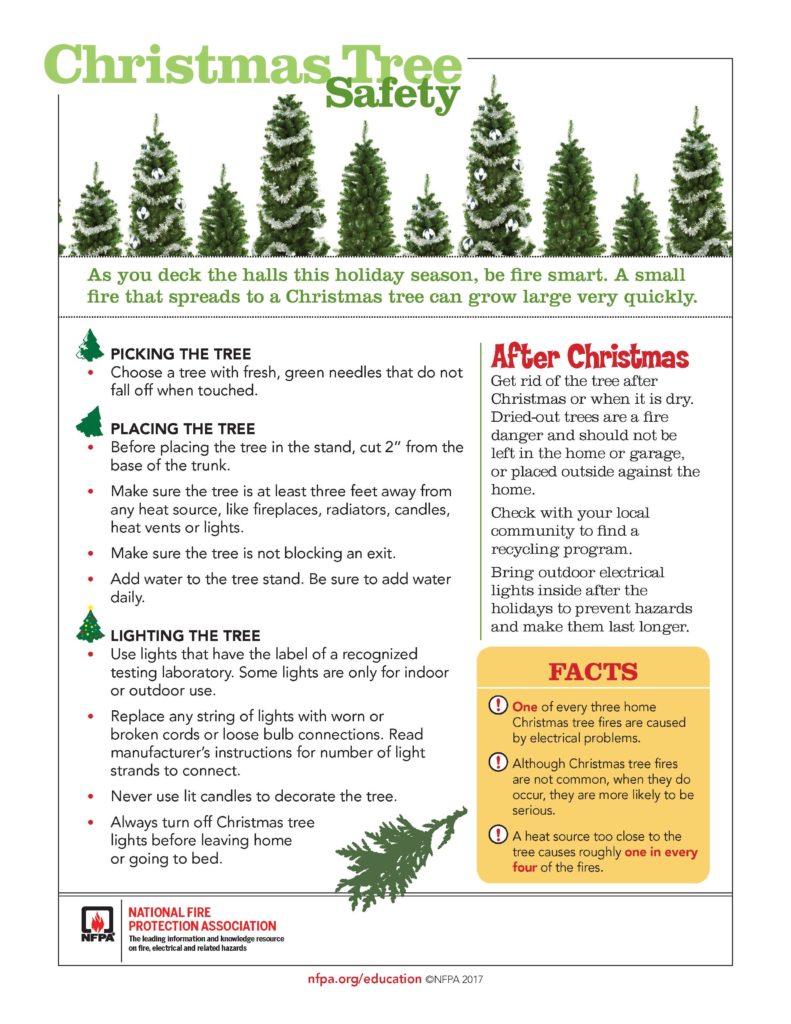A Christmas tree is one of the enduring symbols of the holiday. But if you fail to keep your fresh tree watered, disaster can strike. A dry tree can quickly turn a happy holiday into a tragic moment. Though Christmas tree fires are relatively uncommon, they can become disastrous in mere seconds.
Take a look at the video below. The U.S. Consumer Product Safety Commission (CPSC) created this video showing how quickly a dry Christmas tree can go up in flames. [1] The first half of the video shows a dry Christmas tree. The second half shows a properly watered Christmas tree.
Tips for keeping your home safe from Christmas tree fires
- When picking a live tree, make sure it’s fresh. If it’s dry and losing needles, skip it and find something else. Never start with a dry tree.
- Don’t put the tree too close to the fireplace or other heat source. A spark or ember, tipped candle, or strong space heater can cause a dry tree to quickly become engulfed in flames.
- Use approved lights. Frayed or broken electric cords can quickly become dangerous.
- Turn off lights when you’re not at home or when going to bed. If you’re not awake or around to enjoy the lights, save on the electricity bill and stay safe.
- WATER YOUR TREE. We can’t stress this one enough. It’s one of the most important factors for ensuring tree fire safety. As you saw from the video above, a dried-out tree can go up in flames in just a few seconds.
- When the season is over, move that Christmas tree outside. Don’t leave it against the house or sitting in the garage or storage shed. Properly dispose of the tree.
Here’s a great Christmas Tree Safety [2] sheet you can share:
From all of us at Horizon Family Medical Group, have a SAFE and HAPPY holiday season!
Resources:
- http://www.nfpa.org/Public-Education/By-topic/Seasonal-fires/Winter-holiday-safety/Christmas-tree-fires
- http://www.nfpa.org//-/media/Files/Public-Education/Resources/Safety-tip-sheets/ChristmasTreeSafetyTips.pdf


